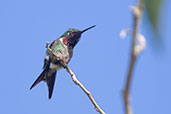
The Amethyst Woodstar is one of the smallest hummingbirds and is found in South America east of the Andes from Venezuela to northern Argentina. See the distribution map at Birdlife International.
It is found in a wide variety of habitats including gardens but excluding forest interiors.
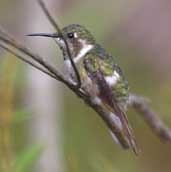
At first glance the bird in the second photo looks like a female but the throat is a bit darker and the flanks are not so rufous as one would expect. When the bird turned to show its gorget in the third photo, there were a few iridescent amethyst discs showing which, I believe, means that it is an eclipse male. The fact that the photos were taken in July and the breeding season is November to April helps to underpin this conclusion.
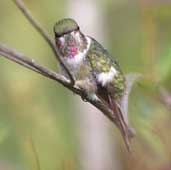
Its heart beat has also been measured - at 20 beats per second or 1,240 beats per minute!
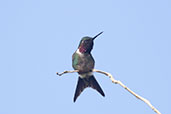
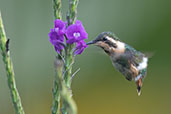
| Previous Page | Back to Index | Next Page |